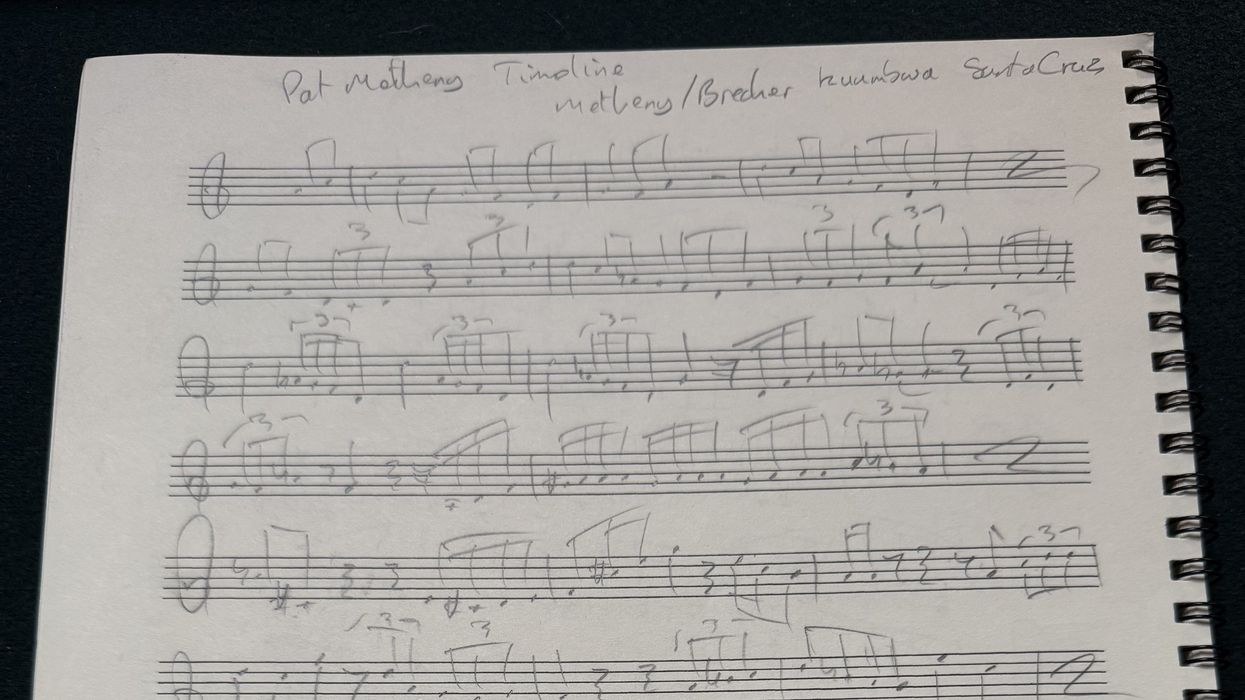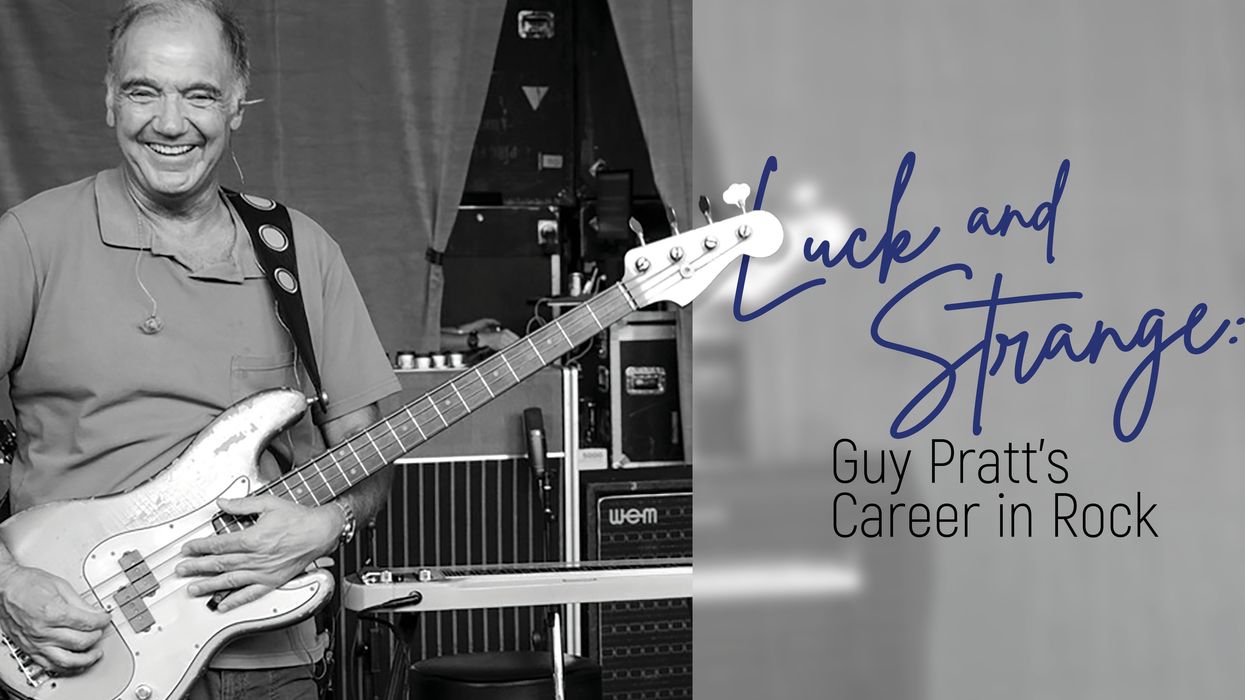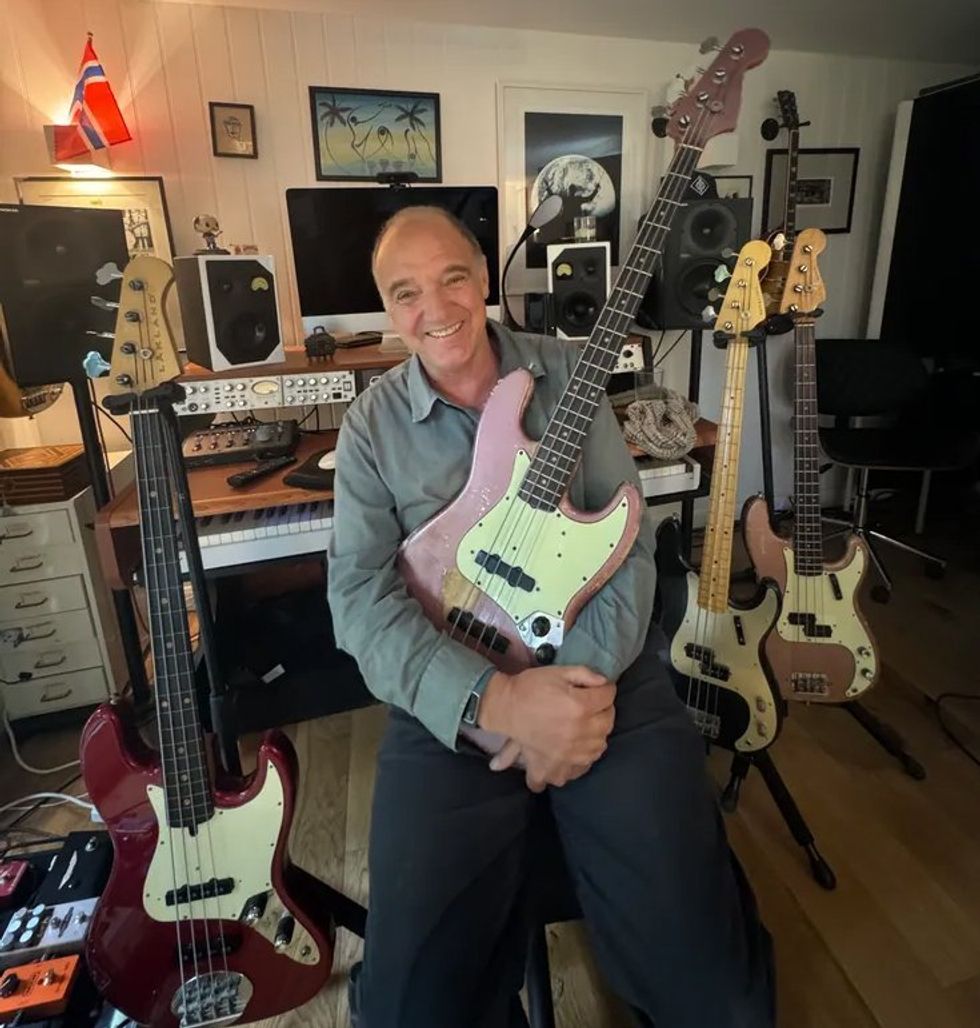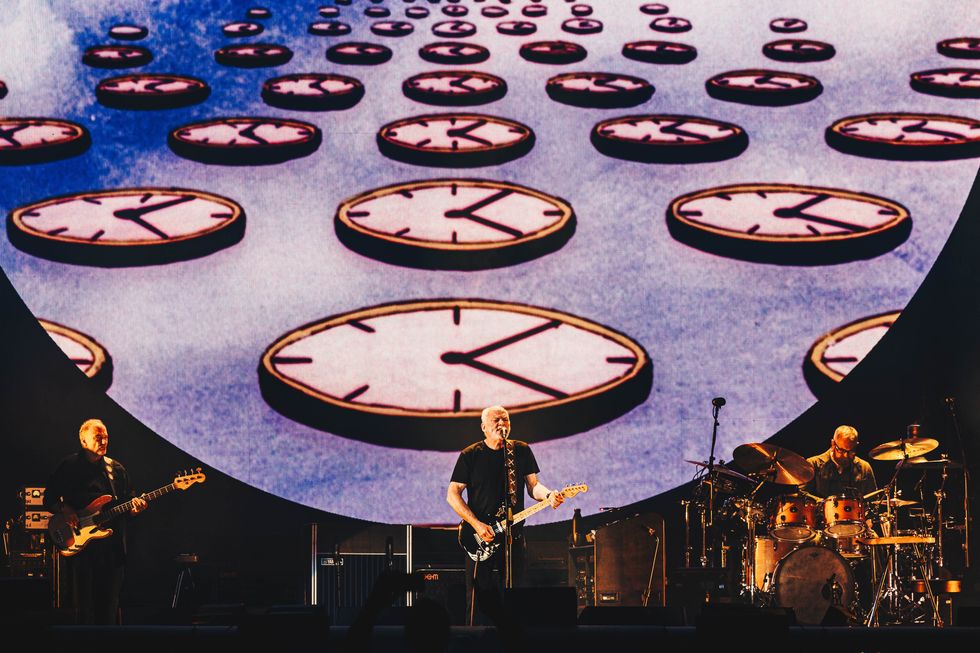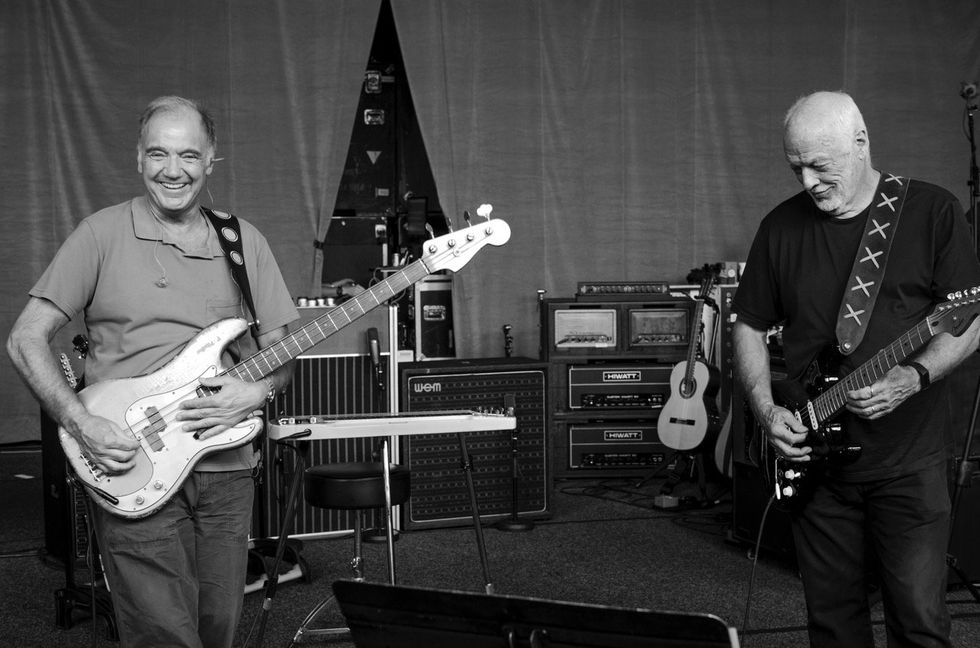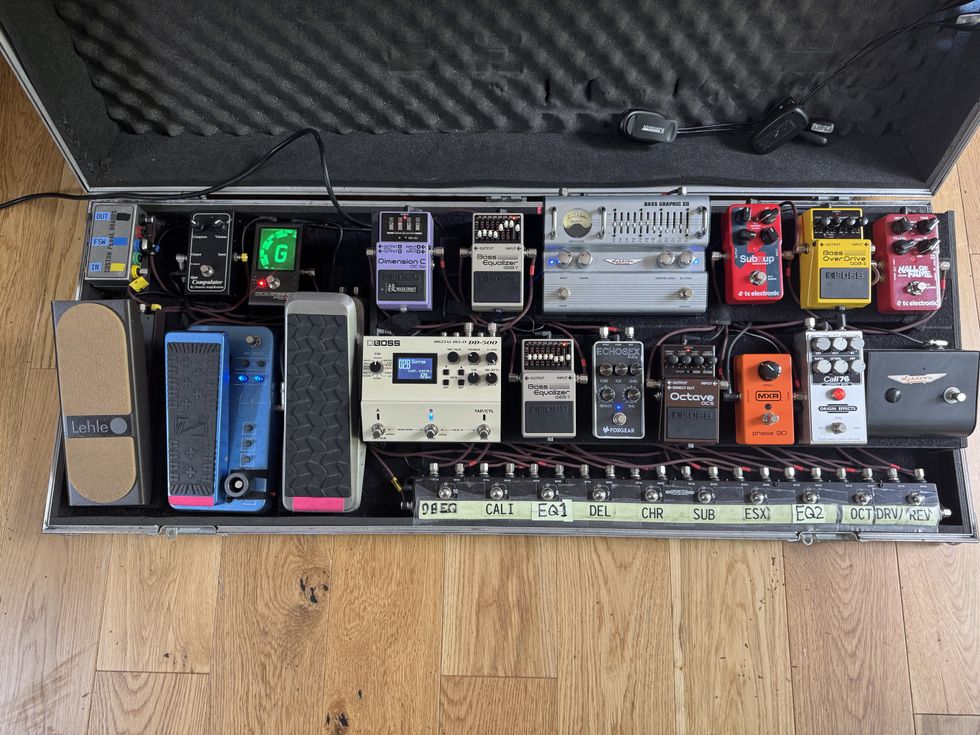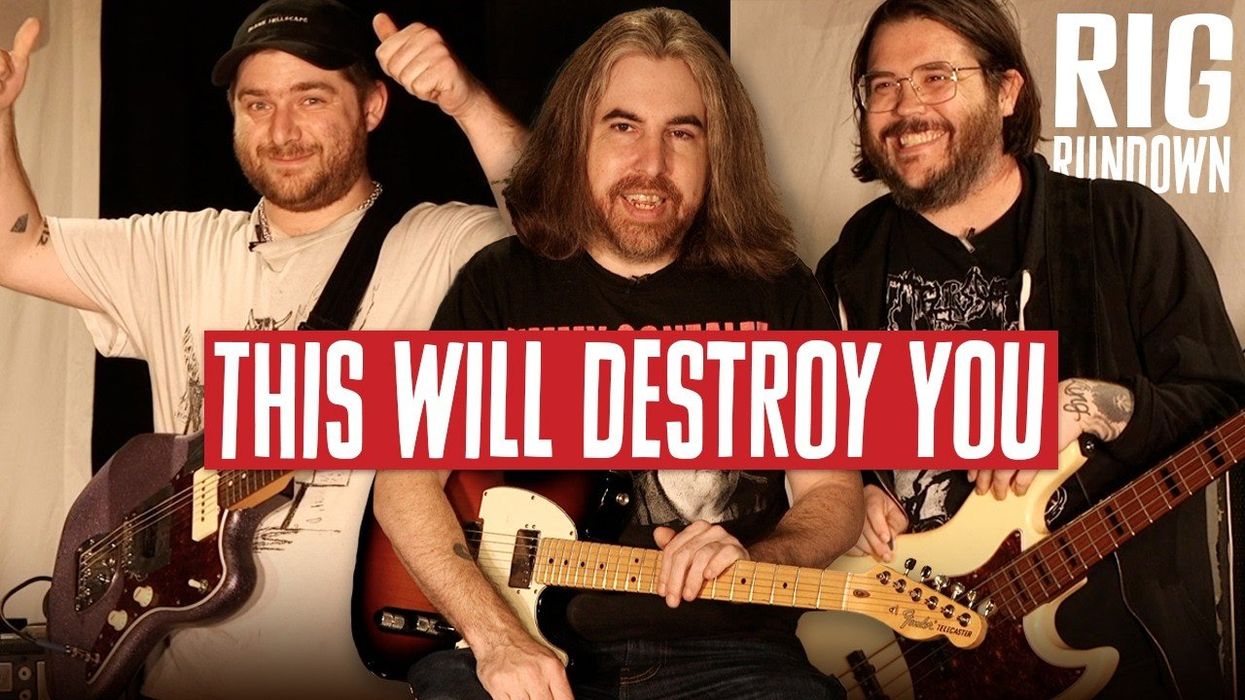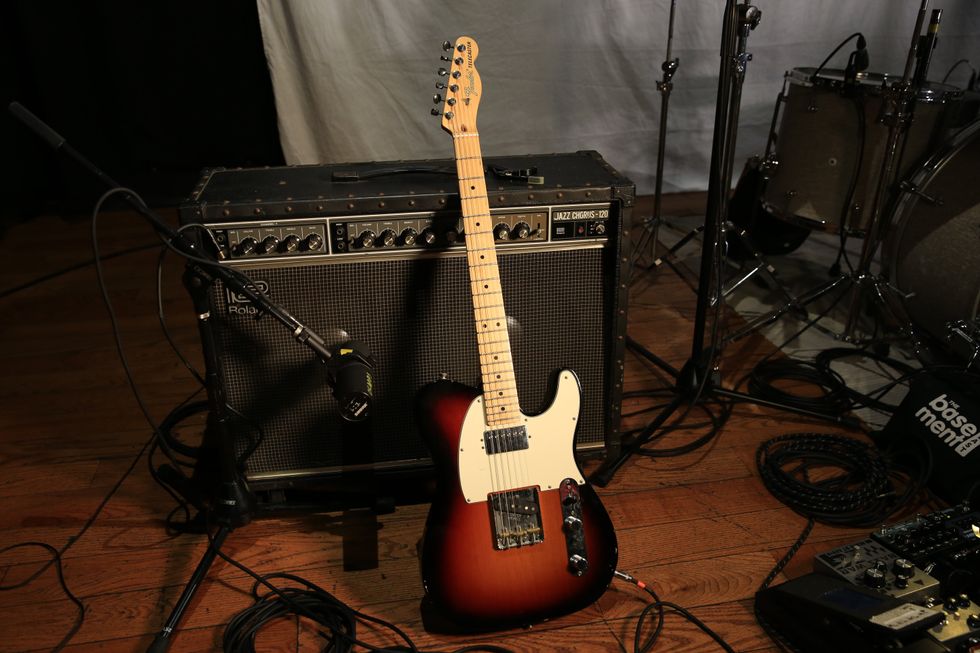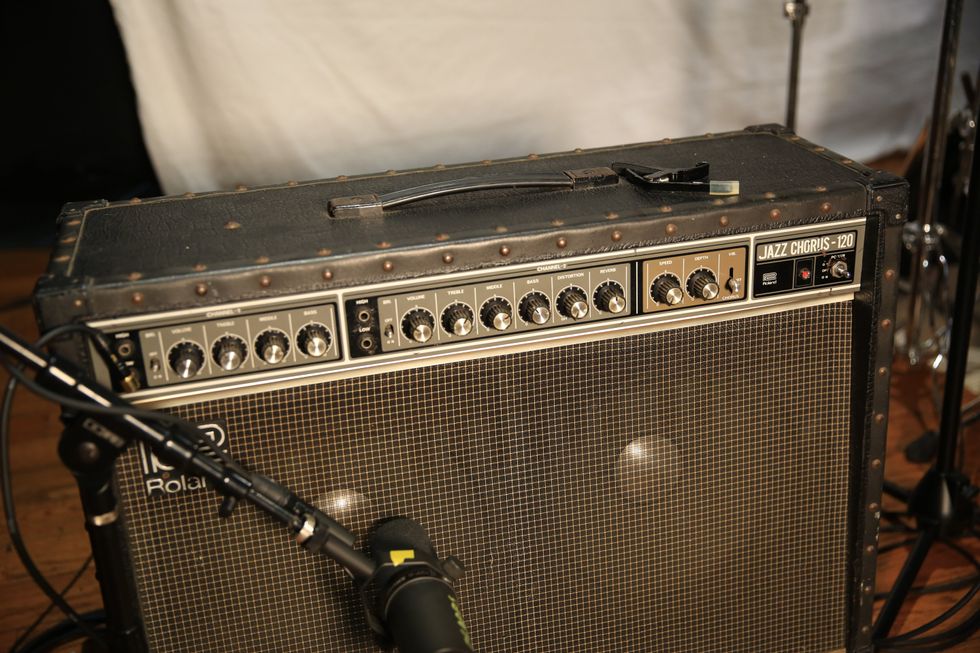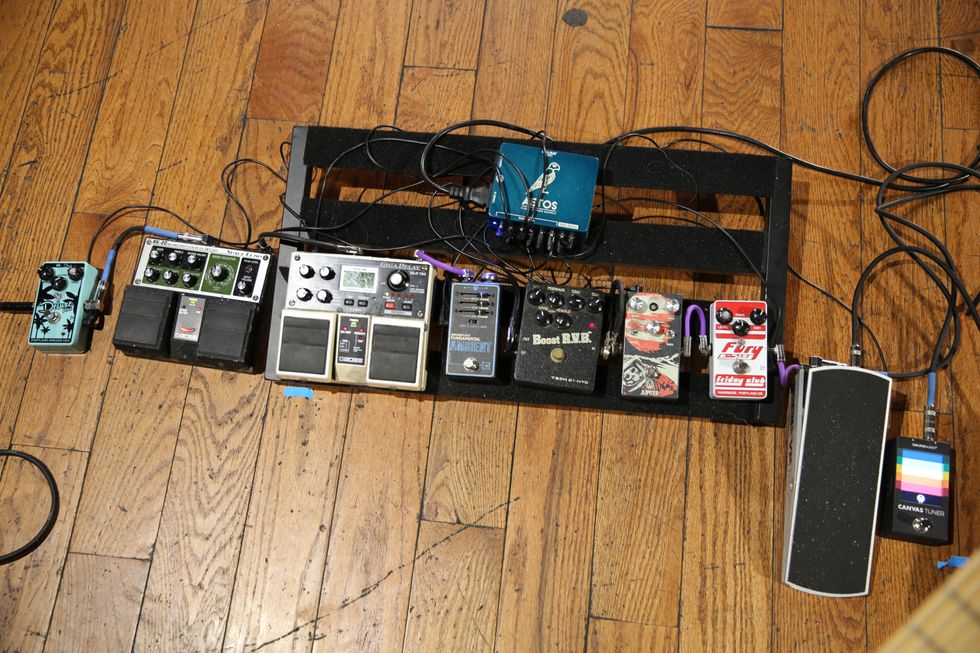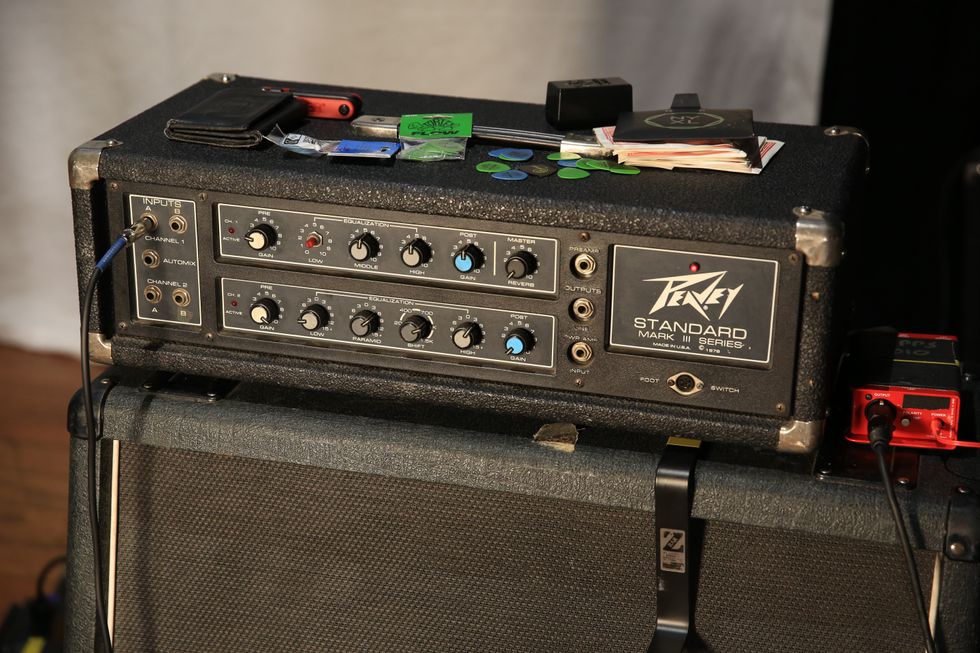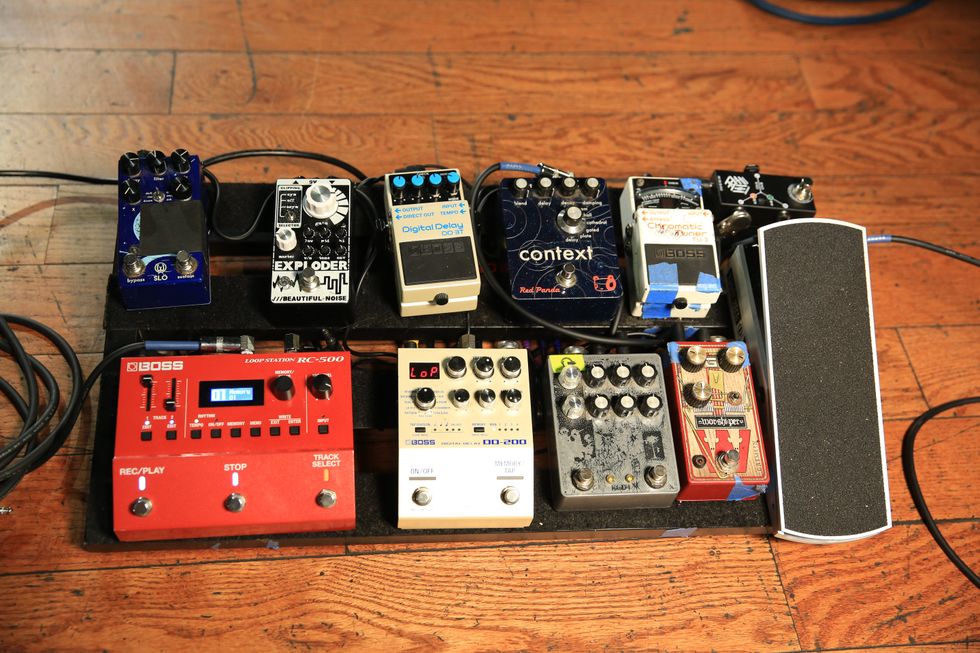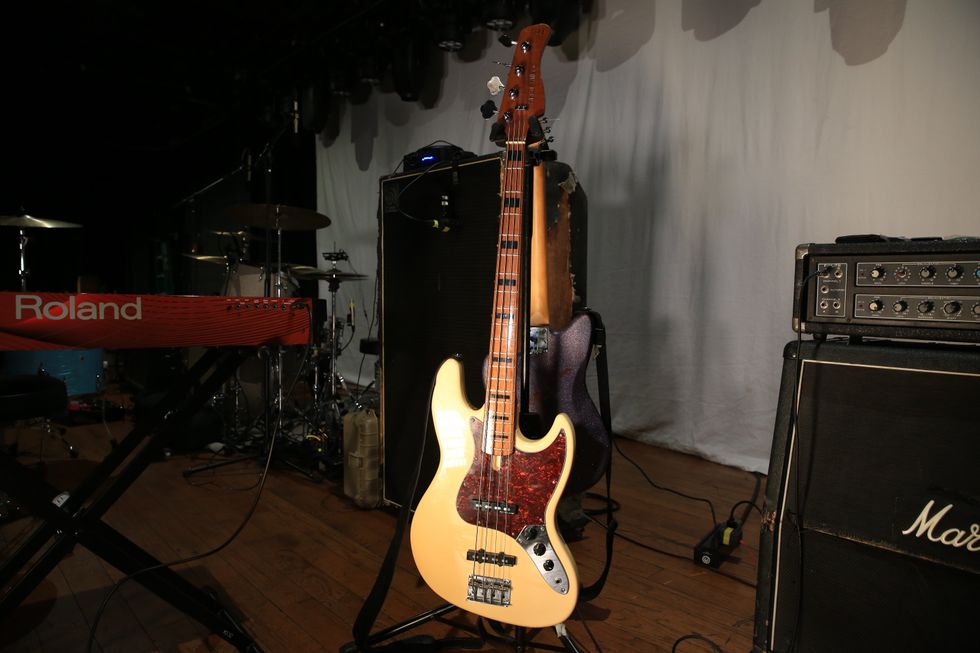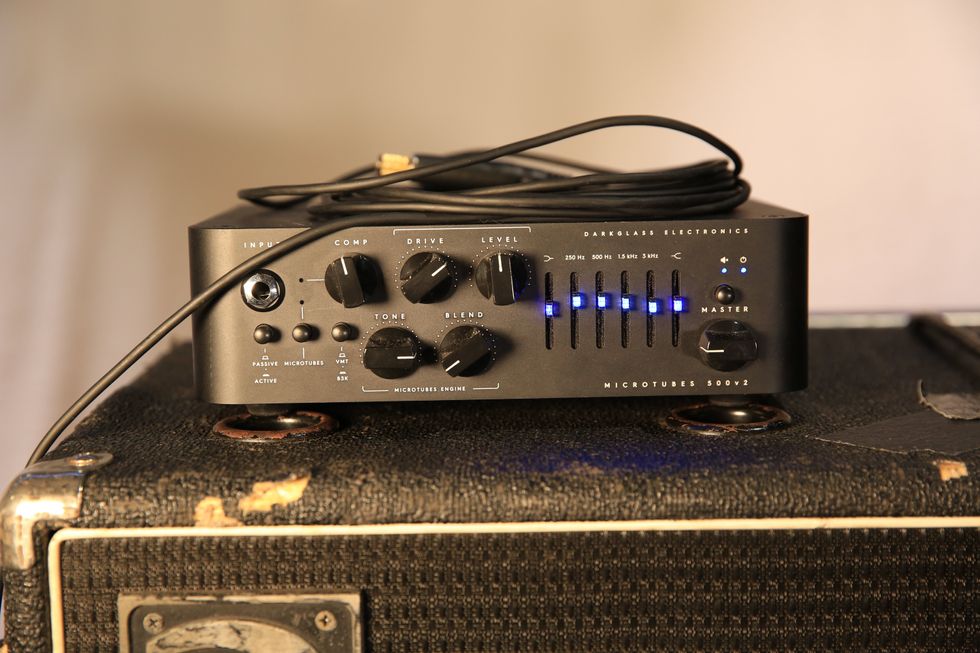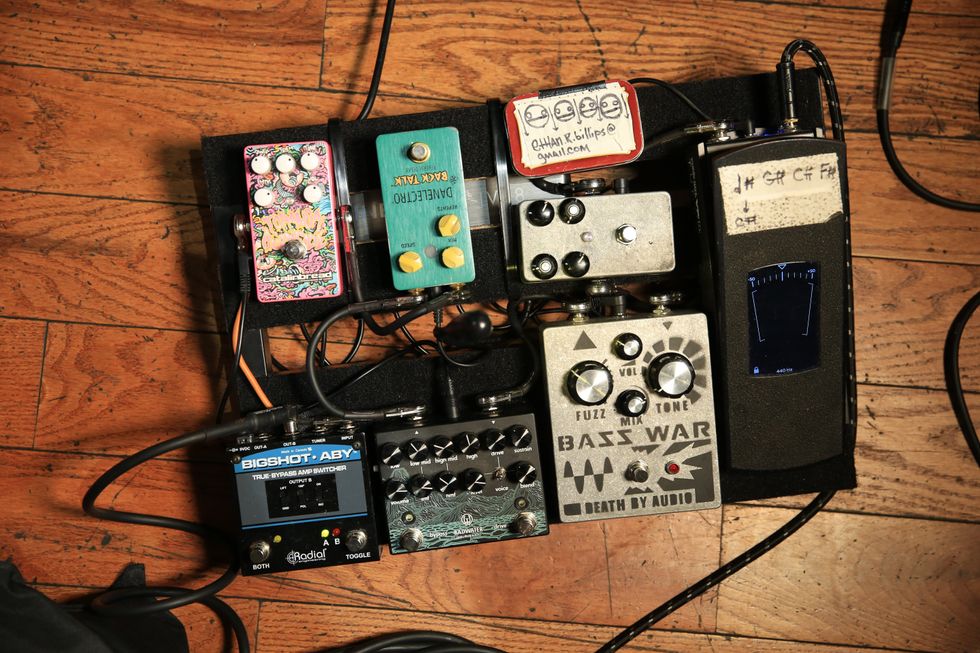Recorded direct into Focusrite Saffire 6 interface into MacBook Pro using Logic.
Clip 1: Tone at 30 percent.
0:00 - Both pickups
0:15 - Bridge pickup
0:31 - Neck pickup
Clip 2: Tone at 50 percent. Both pickups. Played through Darkglass Microtubes X pedal.
RatingsPros:A nice looking (and sounding) take on the Mosrite Joe Maphis classic. Comfy neck. Cons: Strapped balance position may not be ideal for all players. Street: $999 Eastwood Sidejack Pro JM eastwoodguitars.com | Tones: Playability: Build/Design: Value: |
Vintage-loving bassists and guitarists are often hampered by the cost of yesteryear’s instruments. Seeking them out is a serious endeavor that can quickly put a large dent in the pocketbook. For nearly 20 years, however, Canada’s Eastwood has done its part to help alleviate this financial dilemma by building old-school replicas at a much-friendlier-than-vintage price. The Sidejack Pro JM we checked out is the company’s recent take on Mosrite’s Joe Maphis bass. And while it shares the cool aesthetic characteristics of the 4-string from the mid ’60s, it steps it up in the playability department.
Into the East
The Pro JM looks almost identical to the Mosrite classic, but a closer inspection reveals some unique tweaks to the design. In lieu of the original’s walnut body and spruce top, Eastwood opted for alder, which is chambered for resonance and weight reduction. Extra care went into the Pro JM’s styling by applying a German carve to the top. It gives the instrument’s look some sultry true-to-its-origin dimensions.
Eastwood’s biggest changes are in the neck. They went for a chunkier shape with medium-jumbo frets rather than the Mosrite’s slim design with small frets. P-bass lovers might enjoy the 1 5/8" nut width, which offers the fretting hand a familiar feel. Maple is the wood of choice for the neck, which is capped with a pau ferro fretboard. And cream binding and dot markers arranged in a “2-3-1” configuration spice things up.
For electronics, the Sidejack Pro JM is outfitted with a pair of Eastwood’s passive M-90 pickups. These P-90-style pickups provide familiar timbres and are controlled by a 3-way pickup switch and a pair of knobs for tone and volume.
Feelin’ Groovy
You can’t help but smile when you’re holding a bass that looks like the love child of an octopus and an amoeba—something that crept right out of a ’60s sci-fi flick. Sitting down with the Pro JM felt cozy and it stayed balanced nicely while I explored. I was pleased with the neck design and found that its mid-C shape and 10" radius provided a smooth, stable platform for string skipping and shifting. All notes were easily accessible across the fretboard, which comes as no surprise for an instrument with a 30 1/2" scale. That said, the bass felt deceptively longer than its design suggests.
There is no absolute when it comes to playing position, of course, but as someone who has ergonomics at the top of my priority list, I was a touch disappointed with the Pro JM’s positioning when strapped for my playing taste. Regardless of its starting angle, it tended to hang at a near-horizontal orientation, which should be absolutely fine for those who play with a pick or prefer a less extreme playing level.
I explored the Pro JM’s tonal possibilities through super-clean amplification comprised of a Bergantino B|Amp head and HD112 cab. It’s no shocker that a vintage-inspired bass would also have old-school sounds, and with its woofing presence, the Pro JM did not disappoint. Cranking the instrument’s tone control to its maximum, the custom M-90s delivered wide and wooly lows along with ample amounts of midrange.
Soloing the pickups highlighted these characteristics. The neck pickup had warmth and a smooth timbre that sounds like it could speak to whales (especially when bending the strings). Switching to the bridge pickup predictably provided less low end, but also plenty of finger attack—ideal for cutting through a dense mix. My preferred setting was dialing down the tone control, which tempered the clicks and clangs while highlighting the burliness that burped from the Pro JM. Switching back to soloing the neck pickup—with the tone knob completely cut—satisfied the EB lover in me. And later, when combining the bass with a Darkglass Microtubes X pedal, I was able to transform the Pro JM into a short-scale doom machine.
The bass was also sonically great onstage when paired with an Ampeg SVT Classic house rig. The JM Pro’s tone cut nicely through a wall of Les Pauls and Marshalls while finding space between the drummer’s bass drum and other percussion. I stuck with the neck pickup for the show, and boosted the tone knob a tad for extra attack.
The Verdict
Eastwood has created a bass that brings fun and a little ’60s sci-fi campiness to instrument design. The Sidejack Pro JM’s 1K price tag might raise a few eyebrows, but keep in mind that it costs significantly less than a vintage Joe Maphis model. If you dig old-school tones and out-of-this-world looks, this Sidejack Pro JM short-scale might be a worthy sidekick.
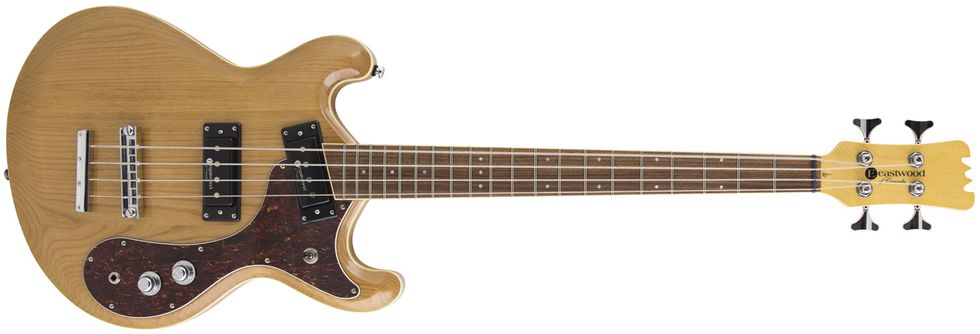

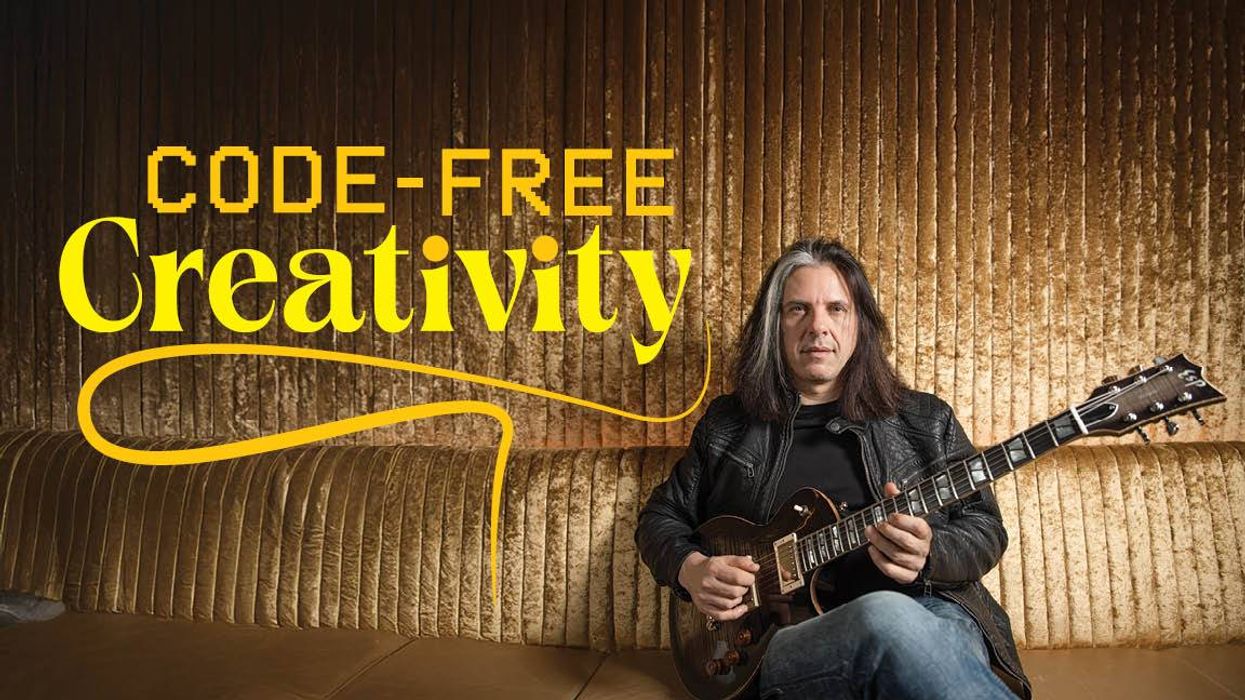


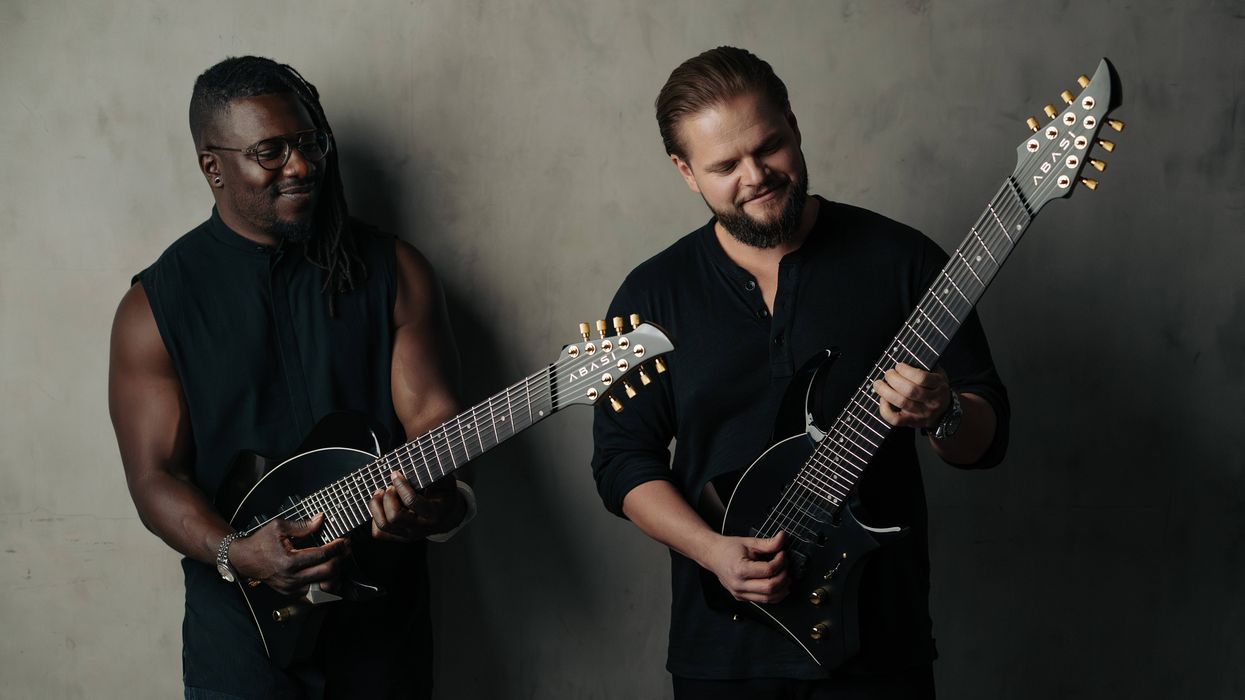
![Rig Rundown: AFI [2025]](https://www.premierguitar.com/media-library/youtube.jpg?id=62064741&width=1245&height=700&quality=70&coordinates=0%2C0%2C0%2C0)












 Shop Scott's Rig
Shop Scott's Rig





